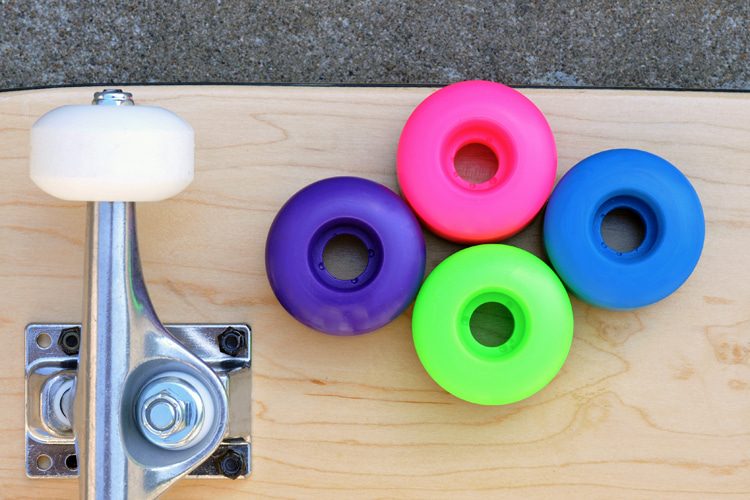As a regular skater, it's almost impossible to imagine that simple sports like skateboarding can have negative environmental impacts, right?
If we talk from an environmental point of view, there are two sides to this coin in skateboarding, like everything else.
While some of us focus on the positive impacts, we tend to ignore the negative environmental impacts of skateboarding.
In this article, I have tried to point out the negatives and positives of skateboarding in terms of eco-friendliness.
Additionally, there are some suggestions in there, too, for skateboarders and brands about how we can all work together to minimize the skateboard's environmental impact.
So, without any further ado, let's begin.
Is Skateboarding Good for the Environment?
While the question seems quite simple, answering the question is equally tricky.
Also, the interesting thing here is that it's really easy to defend both the positive and negative sides here.
Let's get back to the main question here for a moment. So, is skateboarding good for the environment? Right now, not too much.
As I mentioned before, it might be unimaginable at first, or people who know about the effects tend to ignore them, comparing them to other massive contributors to environmental pollution.
The answer might seem a little too harsh, but there are bright sides to the story, too. Innovative research is going on each day to improve the whole scenario.
Before, in the late 1990s, skateboarding used to be just four wheels literally attached to anything flat.
From there, skateboarding came a long way to develop different aspects of skateboarding.
If that continues to happen, we can definitely be hopeful that in the future, we will be skating without worrying about the environmental impacts of our beloved sports.
But at the same time, we have to keep in mind that the time is running out, and it's running out very quickly.

What Are the Positive Environmental Impacts of Skateboarding?
Due to the nature of skateboarding sports, it's a little tough to talk about the positive environmental sides of skateboarding.
However, as mentioned before, the coin has two sides, and the positive side here is impressive, too.
Skateboarding has several positive environmental impacts, and different environmental organizations are working hard to promote them.
Let's have a look at some of them.
1. Skateboarding as a Commuting Alternative
All the vehicles we use daily emit a big chunk of carbon, causing climate change.
There have been many ideas on how to deal with this problem, but only a few of them proved to be efficient enough to reduce carbon emissions.
According to research, skateboarding is one such idea that can play an important role in this sector.
Moreover, as there is no engine, fuel consumption, or large machinery parts of any kind, skateboarding is a way better commuting option than the cars we use regularly.
Additionally, it can help with the existing traffic problems we have seen in bigger cities.
While in traffic, running cars' engines emit harmful fuels, which can be prevented by encouraging skateboarding to travel from one place to another.
I know some of you are wondering what older people can do here as skating is most considered a sport for the young generation.
There is an easy solution here for that, too.
If you are familiar with electric skateboards, you might also know that it almost requires zero physical strength and attributes to ride one.
Some environmental issues also need to be solved with electric skateboards, as they run on the motor on batteries.
Still, in terms of efficiency and environmental pollution, an electric skateboard is way ahead in the game than any gas-powered vehicle.

2. Making Use of the Alternate Resources
More or less, all of us are aware that Canadian maple woods are the primary and most preferred material to manufacture skateboard decks.
Unfortunately, massive deforestation to meet this vast demand has a terrible environmental impact, which I'll talk about later in this article.
But the positive side is that, due to the harmful impacts, many manufacturers are now doing their research to make the best use of the alternative resources available.
In that regard, I would say the increase of bamboo in deck manufacturing is a prime example here.
In terms of resilience and sustainability, bamboo is way better than wooden decks.
Some might say that why using bamboo won't cause deforestation. Bamboo is a tree that takes only months to grow and grows in huge quantities, which is not the case for Canadian maple trees.
Canadian maples require a lot of care, special weather conditions, and most importantly, it takes decades to grow enough before you can use them for deck manufacturing.
Now, that's the use of alternate materials for the deck.
Similarly, there is an opportunity for trucks, wheels, and other skateboard parts to use eco-friendly materials.
Impressive enough, manufacturers are taking full advantage of it and trying to provide the best products for skaters and the environment.
The last and most crucial benefit here is the promotion that these few eco-friendly skateboard manufacturers have done.
They are setting up a pretty good practice here. In the long run, other industries can easily follow the lead and become friendlier to nature by using the alternate resources available around us.
What are the Negative Environmental Impacts of Skateboarding?
The design and build quality of skateboards have improved a lot over the last few decades.
Furthermore, some manufacturers are trying their absolute best to minimize environmental damage, but the change is still far from making an actual impact.
If I have to weigh the positives and negatives, unfortunately, the number of negative impacts was way higher throughout the skateboard environmental impact assessment.
Below, I have discussed some of the significant harmful effects that skateboarding currently has on the environment.
1. Deforestation
You might not have thought about it before, but as soon as you hear it, you might have probably realized where this allegation is coming from.
Previously, I mentioned how skateboarding is getting popular as a commuting option.
Alongside, the previous demand for it as a sports and recreation activity was already there.
Due to the popularity of skateboarding, the need for skateboards is skyrocketing while the supply of raw material stays the same, the good old Canadian maple wood.
Deforestation is one of the primary contributors to climate change.
By doing this massive maple deforestation, the skateboarding industry is just worsening the overall situation here.
Canadian maple trees are primarily exclusive to Canada and grow there due to the humid and cold weather conditions.
It takes anywhere between 30-70 years for a tree to be mature enough before using it for manufacturing a skateboard deck.
Additionally, only the lower part can be used for the deck.
These reasons are enough to demonstrate how rare of a resource Canadian maple trees are.
Yet, millions of decks are being manufactured every year to meet the uprising demand of the skateboarding community.
Over time, this deforestation also causes soil erosion and makes agriculture a challenge in that area.

2. Carbon Emission
Another considerable drawback of skateboarding is the carbon emission through skateboarding.
You probably are familiar with the idea of carbon emission from the vehicles we drive regularly.
But are you wondering how skateboarding is causing it? If you skate in a skate park, the answer to this question is all around you.
You might not know, but the construction industry is another significant contributor to global warming.
You'll be shocked that the carbon generation in the construction sector is even more significant than in the aviation industry.
Everywhere we skate on, the skate parks, ramps, half-pipes, everything around us is mainly made of concrete, which is a notoriously harmful component for the environment.
It isn't eco-friendly at all, and yet we are making more and more of these skate parks around us to accommodate our new skaters.
Some people also argue that these places allocated by the city authority could have been used for gardens and city parks.
So it could have been a real help to the environment alongside a place for kids to lay around.
However, the word of hope is that city planners and modern-day skate park designers are considering this harmful effect seriously and coming up with new ideas to improve the situation.
We have already seen the implementation of these new designs with trees to reduce the heat effect and water runoff at the park.
The carbon emission from electric skateboards is another negative side of skateboarding.
While there are certain benefits, it has more disadvantages than its counterpart bicycle.
The battery and the motor are harmful to the environment because of the e-waste it creates afterward.

Impact of Various Skateboard Parts
Now that we know the overall negative and positive skateboard environmental impact, let's talk about the individual parts, their impacts, and how they can be improved.
Decks
I have already talked about the decks and how the use of maple decks is not helping the situation.
Though the manufacturers have taken some initiatives to plant more Canadian maples, that can't be a permanent solution to the problem.
However, a shift from Canadian maple wood to bamboo can improve the situation.
Apart from that, some manufacturers are also trying recycled plastics too, which is better than mass deforestation.
Wheels
Wheels are an important part of the skateboards, yet this part has the least development in terms of environment-friendliness.
In the past, skateboards used to have clay wheels, but right now, the use of oil-based polyurethane is causing further damage to the environment.
Polyurethane is typically marketed as non-toxic, but the process of obtaining it still emits CO2 on a large scale.
Additionally, some manufacturers are showcasing their innovation in the field these days.
For example, there are soy, corn, and sugar-based wheels on the market slowly getting popular.
Though these wheels tend to be a little heavier, it has a massive scope of improvement too.
Trucks
The trucks of the skateboard are a tiny part of a billion-dollar industry.
Still, this part alone has the most chance of environmental pollution due to how it's manufactured.
Most big manufacturers make their trucks from different metal alloys, making it almost impossible to separate and recycle them again.
Instead of using these alloys, manufactures should strictly stick to recycled aluminum only.

Few Ways to Help the Situation
Apart from these parts, there are certain things we as skaters can do to improve the situation.
If we work from our position and have the will, the change is bound to happen one day.
As I previously mentioned, due to the nature of skateboarding, everything relating to it tends to wear out fast.
The same goes for skate clothing.
So this particular part of the garment sector is responsible if we look at the overall damage by skateboarding.
Every little thing can make an impact, so it's our duty to hold the manufacturers responsible and raise our voices in support of creating an eco-friendly skateboarding scenario.
Manufacturers can easily do more research on the product packaging and make the change there too.
Recycling and reusing the parts and clothing can also take us close to our goals.
However, instead of just throwing them away, we should try to extend the life circle to reduce the carbon footprint in the long run.
With the popularity of skateboarding, skating events and competitions happening every year have increased simultaneously.
The massive attendance there can have a huge impact on the environment too.
The organizers of these events should develop more planning and strategies to execute a successful event without causing any harm to the environment.
The planning of the NFL and Olympics can be a great example of that.
Final Words
As you can see, there is both positive and negative skateboard environmental impact out there.
Now it's totally up to us, the skaters, to decide which side we want to promote.
Another noticeable thing is the massive scope of improvement in the scenario.
While some companies and manufacturers are trying to make a difference, unfortunately, that can't be said for most of them on the market.
There is still a long way to go before we really create a fully sustainable and eco-friendly skating environment.
Till then, every single of us, including the brands, have to put our best into this cause so that skateboarding can come out as a green sport one day.
Words by Shahed Tyson | Founder of www.RiderIntro.com
